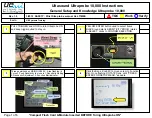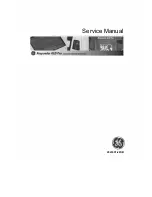
Surface ERH readings – using Hygromaster and Humidity Box
The humidity box is a block of closed cell, high-density foam
that is used to isolate a pocket of air at the floor surface from
the surrounding environment.
The box is placed on the floor slab and left for sufficient time
for the air pocket to equilibrate with the relative humidity
within the slab itself.
The Hygromaster is then used to measure the relative
humidity of the air pocket.
GE Sensing recommend that you use the Hygromaster and humidity box in accordance with the guidelines of
applicable standards. The quick reference guideline is as follows:
1.
Use the Aquant to identify the areas that require measuring with the Hygromaster and humidity box
2.
Place the box or boxes in position, ensuring that the hole in the side of the box is plugged.
3.
Put a brick (or similar) on top of the box to ensure it stays in position.
4.
Leave for sufficient time for equilibrium to be reached (this will be for a minimum of 24 hours and
subject to slab thickness and surface finish – refer to relevant standards for more information).
5.
Remove the plug from the box and insert the Hygrostick into the hole. The conical sleeve fitted to the
Hygrostick makes a seal with the hole when pushed firmly into position.
6.
Leave the Hygrostick in place for minimum of 30 minutes, to allow it to acclimatise with the conditions
within the humidity box.
7.
Connect the Hygromaster to the Hygrostick using the extension lead as shown and take the humidity
measurement.
8.
Check readings at 5-minute intervals. It is safe to assume the probe has acclimatised when 3
concurrent readings are within ± 0.3%rh of each other.
9.
Interpretation of readings (as per BS 8201, 8203, 5325). Less than or equal to 75%rh: dry. If there is
any doubt or ambiguity regarding the slab moisture level, consult with the manufacturers of the
specified adhesives and/or decorative floor coverings
before laying
.





















